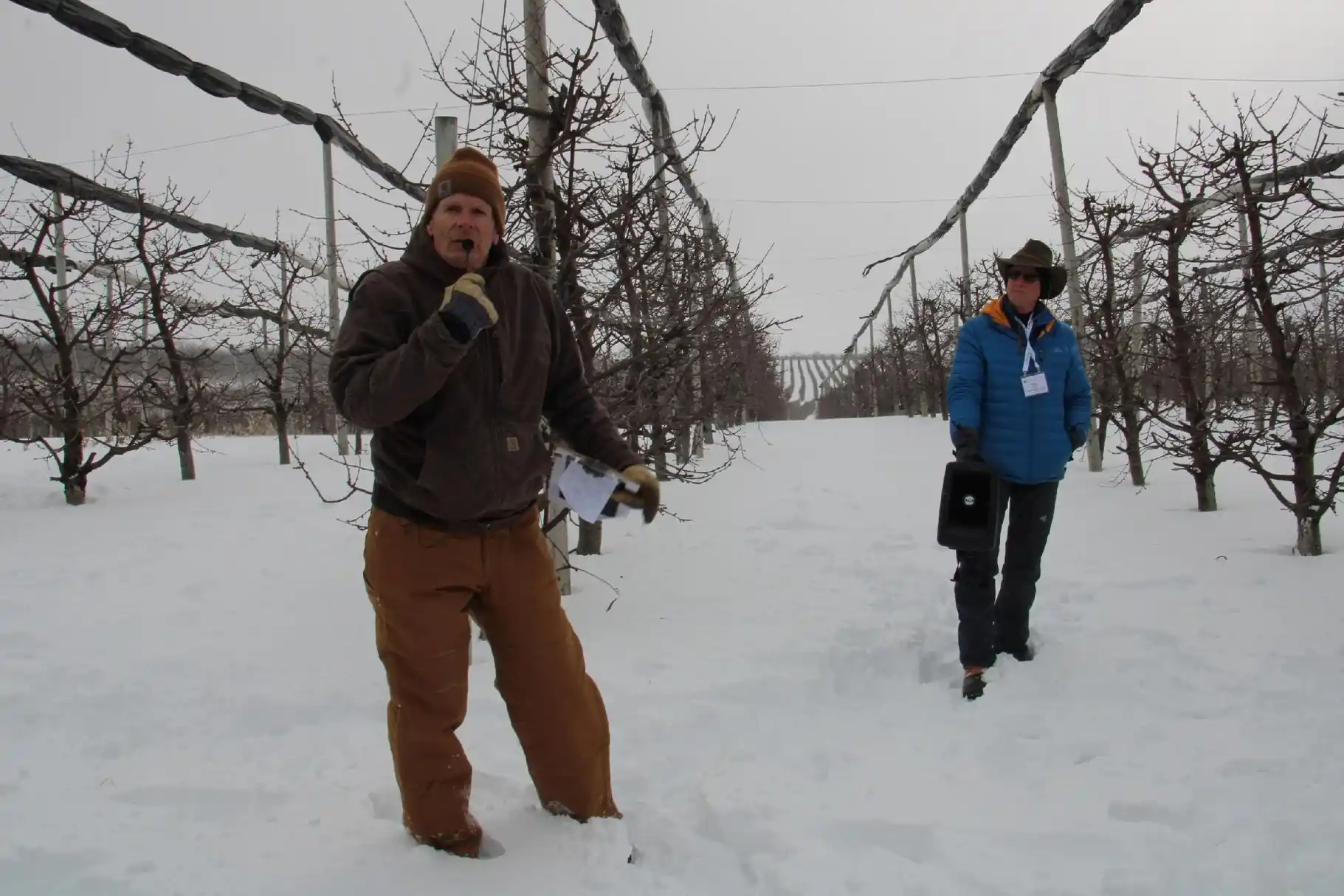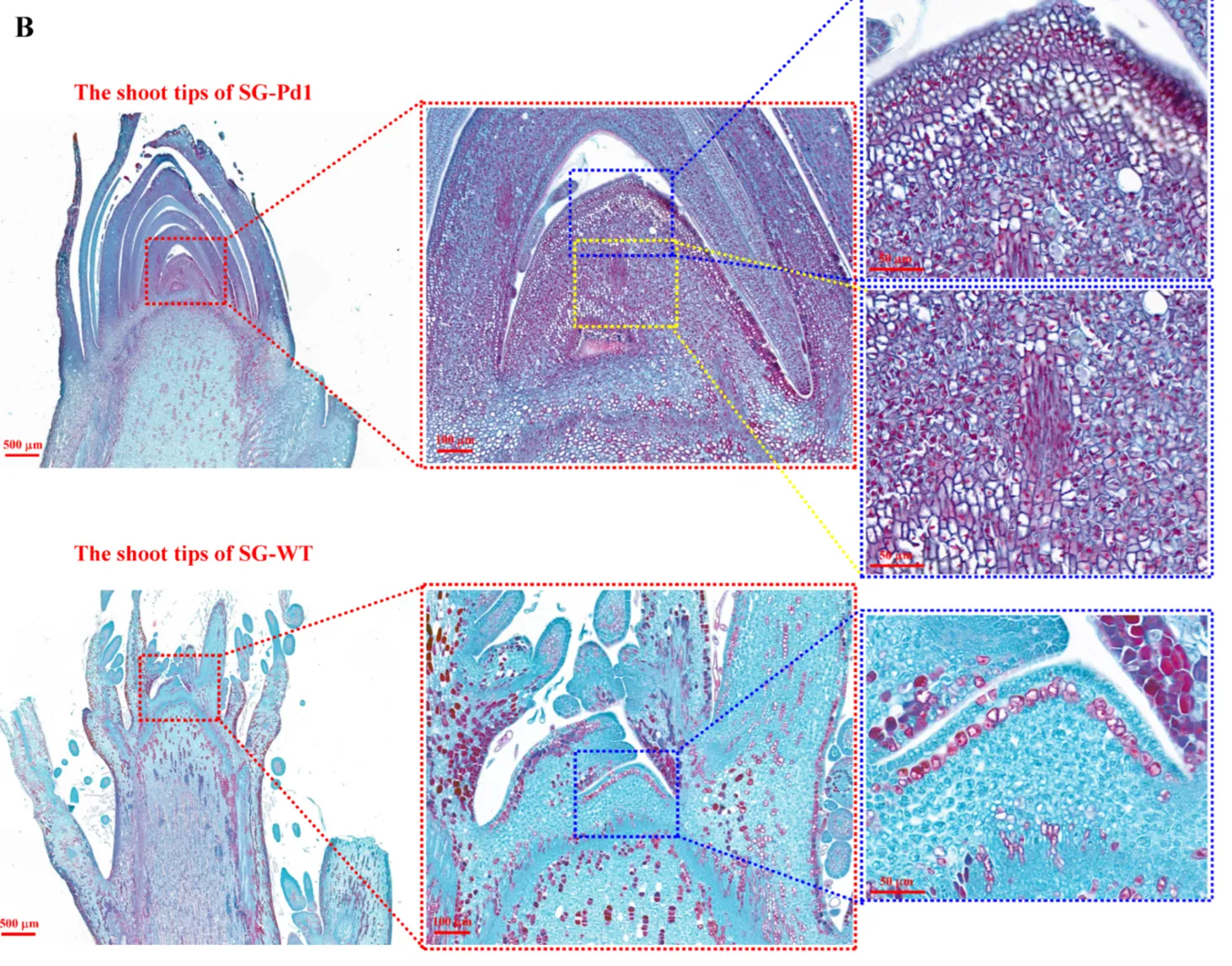Bacterial canker or bacterial cancer is one of the major bacterial diseases of drupe fruits and represents a critical limiting factor for the production of sweet cherries worldwide (Hulin et al., 2021). In Chile, it is one of the main diseases affecting the cherry tree (Beltrán et al., 2021), and the economic losses it causes can reach up to 75% in the early years after planting and between 10-20% among mature trees (Spotts et al., 2010).
It is a disease difficult to control due to the lack of effective chemical or biological control measures and the endophytic nature of the pathogen during the stages of the disease cycle (Farhadfar et al., 2016). Symptoms of cherry bacterial disease, caused by the main pathogen Pseudomonas syringae pv. syringae, vary depending on the infected plant part, variety, pathogen strain, and environmental conditions at the time of infection.
The characteristic symptoms appear only on the aerial part of the tree and include: subcortical cankers that ooze gum on the trunk, branches, and twigs, ringing, halting of shoots and flowers, weakening of buds and twigs, fruit and leaf lesions, and decline in yield (Latorre, 2008; Millas & France, 2017).
The affected leaves show watery lesions that become brownish-red and eventually fall off. On the fruits, dark, sunken lesions appear. On the trunk, near the cankers, a brown discoloration can be observed under the bark, which extends across the affected area but does not penetrate deeply into the wood. In cross-sections of affected branches, a brown ring can be observed immediately under the bark.
The more necrotic parts of the bark form cankers with abundant gum exudation, large cankers that interrupt the flow of sap, and the tip of the branch dries out (Latorre, 2008; Millas & France, 2017; INIA, 2020). In spring, delayed sprouting, poor seasonal growth, small leaves, and eventually the death of twigs, branches, and limbs occur.
Normally, abundant regrowth occurs from the roots (Latorre, 2008). It has also been observed that younger trees are more susceptible to the disease (Ellena & Guerrero, 2006; Latorre, 2008).
Causal Agents
In recent decades, the number of causal agents of this disease has increased dramatically and is mainly associated with the fluorescent gram-negative bacterium Pseudomonas syringae pv. syringae. However, other species of Pseudomonas have been described, such as P. syringae pv. morsprunorum (races 1 and 2), P. syringae pv. persicae, P. syringae pv. avii, P. viridiflava, and P. cerasi (Bophela et al., 2020; Hulin et al., 2020).
In Chile, this disease is widely associated with P. syringae pv. syringae, while the pathovars morsprunorum (races 1 and 2) and persicae are considered quarantine pests absent in Chile according to resolution Exenta N°:2396/2018 (INIA, 2020).
However, the pathogen Pseudomonas syringae pv. morsprunorum race 1 has recently been reported for the first time in infected cherry tissues in the Los Lagos region (García et al., 2021), which opens the possibility of finding this and other previously unreported pathogens in the cherry trees of our country.
Furthermore, based on genomic studies, a reclassification of some species has been proposed. For example, the species P. syringae pv. morsprunorum is proposed to be renamed as P. amygdali for race 1 and P. avellanae for race 2 (Gomila et al. 2017, Hulin et al., 2019).
Conditions Favorable to the Disease
P. syringae pv. syringae penetrates exclusively through wounds and those left by falling leaves are recognized as the most important pathway for the penetration and development of bacterial canker (Latorre, 2008). This disease is favored during periods of continuous rain and cold, especially when temperatures drop below freezing (frost), which causes damage to tissues and subsequent infection by P. syringae pv. syringae (Ellena & Guerrero, 2006; Millas & France, 2017).
Due to these causes, the disease peaks in activity in late autumn, winter, and early spring (Millas & France, 2017).
Effect of Temperature on Pseudomonas syringae
Pseudomonas syringae is a cold-tolerant bacterium whose optimal temperature for growth is between 12 and 25°C (Hirano & Upper, 1990).
A notable characteristic of some species in the Pseudomonas syringae complex is their activity in ice nucleation (INA), a capability associated with causing frost damage to plants, resulting in the release of water and nutrients, creating openings in the plant's surface to facilitate bacterial entry (Xin et al., 2018), as well as opportunistic fungal pathogens (Fones et al., 2020).
INA bacteria play an important role in forming ice nuclei above -5°C, causing most of the ice formation on plant surfaces (Lindow, 1983) and thus favoring their infection during frost events. Among the causal agents of bacterial canker, only P. syringae pv. syringae, P. syringae pv. persicae, and P. viridiflava are reported to have ice nucleation activity (Sundin et al., 1988; Kaluzna et al., 2012; Gasic et al., 2012; Xin et al., 2018).
The agricultural importance of cold-tolerant microorganisms arises from the fact that crops are subject to periods of transient cold, which are detrimental to mesophilic microbial processes associated with biocontrol and plant growth promotion activities, which occur at temperatures between 20 and 45°C (Mishra et al., 2011; Vega-Celedón et al., 2021). Therefore, under cold conditions, Pseudomonas syringae is favored over other antagonistic microorganisms.
In our laboratory tests, we observed that Pseudomonas fluorescens isolated from native plants in cold areas can withstand temperatures below zero down to -20°C for 24 hours (Vega-Celedón et al., 2021).
Evaluating the tolerance to different temperatures of a strain of Pseudomonas syringae pv. syringae, we observed that it was able to tolerate -5°C for one hour and -3°C for two hours (simulating a frost), and growth was observed when it was re-exposed to room temperature.
Additionally, abundant growth was observed when the Pss strain was exposed to 4°C, 10°C, and 15°C for five days. In contrast, its growth was halted at 37°C and it was unable to survive when exposed to 40°C for three days.
Practical Effects
Since P. syringae is primarily favored by low temperatures, humidity, and precipitation, it is important to be aware of weather forecasts and record these events to take measures when the pathogen is favored.
Recently, various institutions and companies have developed different methodologies for monitoring Pseudomonas populations, a very useful tool for observing the bacterial growth dynamics in relation to weather events and crop phenology and thus for making preventive applications of antibiotics, copper-based products, and/or biological control products at the right times and also for seeing the effect of an application, if it has indeed managed to reduce the Pseudomonas population.
Finally, in the case of biological products for managing cherry bacterial disease, it is necessary to consider that beneficial microorganisms are tolerant to low temperatures to exert their inhibitory effect on the pathogenic Pseudomonas under favorable cold conditions.
Source: Mundoagro
Image: Mundoagro
Cherry Times - All rights reserved












